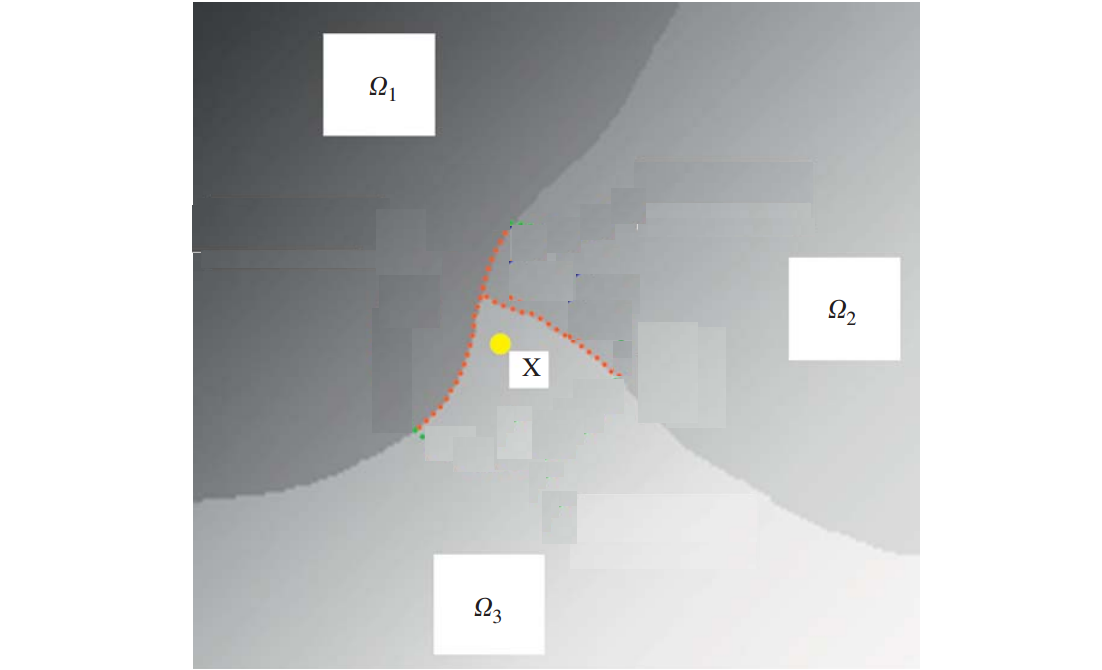I have a 2D image defined on a region $\Omega$. Let $I: \Omega \to R$ be a gray image. Assume that the region can be separated into $N$ sub-regions $\Omega_i$ such that $$\forall i,j=1,\ldots ,N:\Omega_i \cap\Omega_j=\emptyset$$ and $$\bigcup_{n=1}^{N}\Omega_n =\Omega$$
To simplify, we assume $N=3$ and it shows in below figure.
We denotes $p(x \in \Omega_i|I(x))$ is posteriori probability of region $\Omega_i$ given $I(x)$. Based on the Bayesian rules, we have
$$p\left(x \in \Omega_i|I(x)\right)=\frac{p\left(I(x)|x\in \Omega_i\right)p(x\in \Omega_i)}{p(I(x))}$$
The segmentation try to assign pixel $x$ to each region based on posteriori probability. That goal is that finds maximum a posteriori probability (MAP) of pixel $x$ in each region. It can express by formula
$$\left\{ \Omega_{i,x} \right\}_{i=1}^{N}=\arg \max_{\Omega_i} \left\{\prod_{i=1}^{N} p(I(x)|x \in \Omega_i)p(x \in \Omega_i )\right\} \tag{*}$$
Assuming that the pixels within each region are independent , the MAP will be achieved over all image domain $\Omega$ $$\left\{ \Omega_i \right\}_{i=1}^{N}=\arg \max_{\Omega_i} \left\{\prod_{i=1}^{N}\prod_{x \in \Omega_i} p(I(x)|x \in \Omega_i)p(x \in \Omega_i )\right\} \tag{**}$$
- Are my formulas $(*)$ and $(**)$ correct?
- If not, Could you help me to correct them?
The reference is Geodesic Active Regions and Level Set Methods for Supervised Texture Segmentation.

